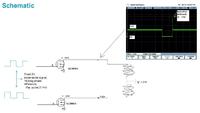ash3
Newbie level 5

- Joined
- Feb 10, 2010
- Messages
- 9
- Helped
- 0
- Reputation
- 0
- Reaction score
- 0
- Trophy points
- 1,281
- Location
- Penang, Malaysia
- Activity points
- 1,361
Hi,
Im a newbie here would like to ask some advise on handling Inductive kick back on inductor switches that im working on.
It seems like the Mosfet(Si2308DS) (DataSheet) occasionally damage after operating a certain duration. (Drain source resistant = ~0ohm)
I found out the Absolute Max rating for the Vds = 60V, however the inductive kickback voltage seems to be higher ~70-75V.
Any Idea on which component to change in order to fix the problem?
Thanx in advance

Im a newbie here would like to ask some advise on handling Inductive kick back on inductor switches that im working on.
It seems like the Mosfet(Si2308DS) (DataSheet) occasionally damage after operating a certain duration. (Drain source resistant = ~0ohm)
I found out the Absolute Max rating for the Vds = 60V, however the inductive kickback voltage seems to be higher ~70-75V.
Any Idea on which component to change in order to fix the problem?
Thanx in advance


